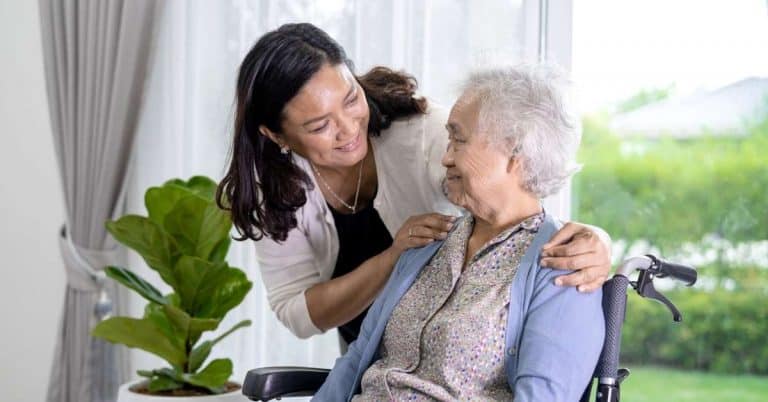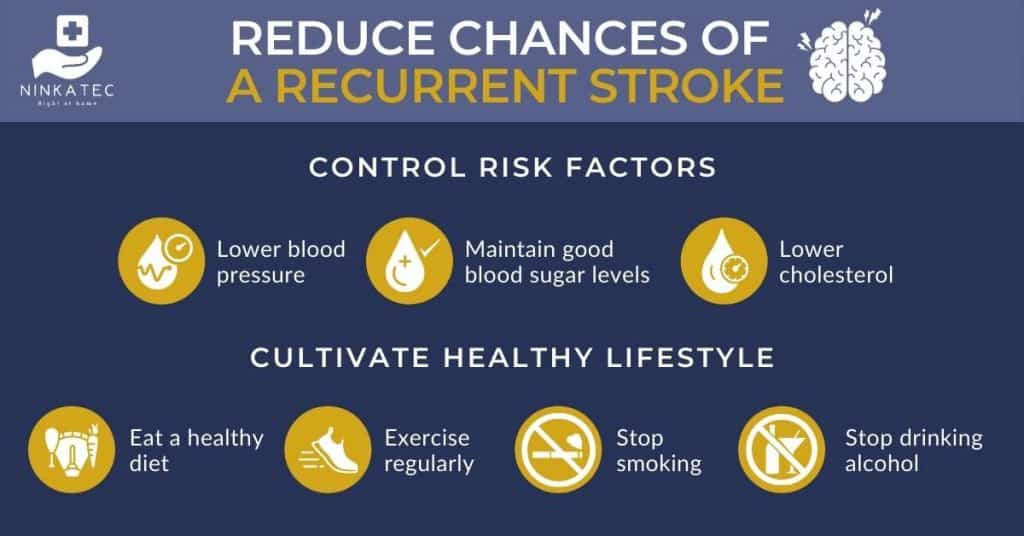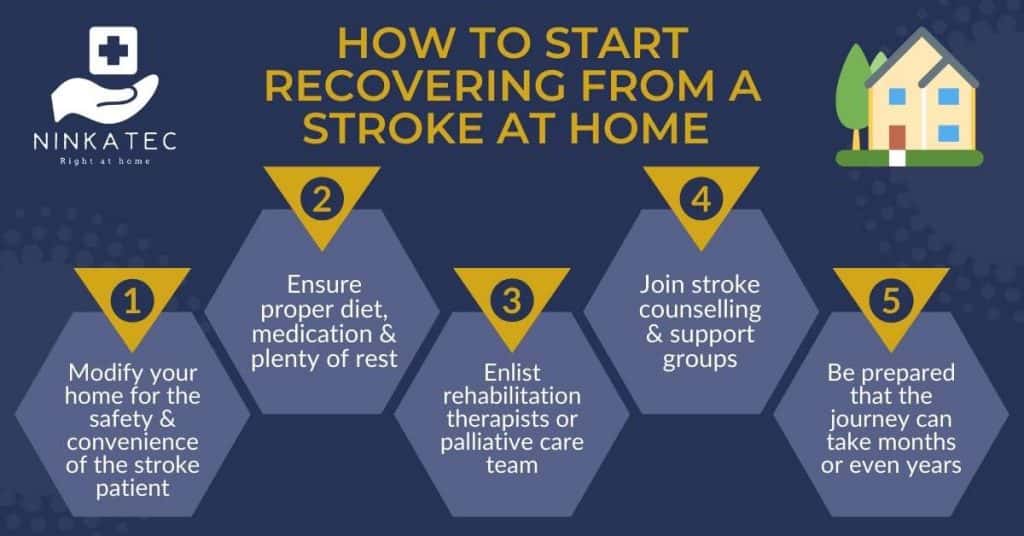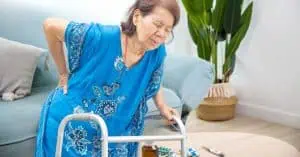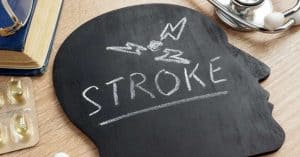A stroke is a sudden, life-changing experience for both patients and their loved ones. The journey to rehabilitation can also be extremely challenging, especially since most patients will need multiple medications and treatments before they regain their strength.
But more than anything, the emotional toll on stroke patients is enormous. They need all the support they can get from friends, family, and caregivers to stay positive. So, how can you be there for them while providing medical assistance and motivation all at the same time?
In this article, we’ll talk about the causes, symptoms, and side effects of stroke, including the treatments which are effective for rehabilitation. We’ll also cover some special services, support groups, and programmes to give you the resources you need. Read on for our in-depth home care guide for stroke patients.
Table of Contents
1. What Is A Stroke? A Brief Overview
Every hour, someone in Singapore suffers from a stroke. It is the biggest cause of disability in Singapore, and the fourth leading cause of death. Many stroke survivors suffer from some sort of post-stroke disability which compromises their quality of life, imposing financial and psychological burden both on them and their caregivers.
Several factors can cause a stroke, but for the most part, they are unexpected and very sudden. A stroke is more likely to happen if someone has health issues or a genetic predisposition to heart attacks. Here are the different types of strokes which give doctors the information they need to find the best treatment for each patient:
- Ischemic Stroke - Accounting for more than 80% of stroke cases in Singapore, ischemic stroke occurs when the vessel supplying blood and oxygen to the brain is blocked. This deprives brain tissue of oxygen and nutrients, causing brain cells to die within minutes.
- Hemorrhagic Stroke – Accounting for 13% of strokes, hemorrahagic stroke occurs when weakened blood vessels rupture and bleed into surrounding areas of the brain. depriving brain cells of nutrient and oxygen. The bleeding deprives brain cells of oxygen and nutrients while also creating pressure that can cause swelling and further brain damage.
Additionally, a Transient Ischemic Attack (TIA), often called a mini-stroke, occurs when blood flow to the brain is briefly interrupted. It causes temporary symptoms that resolve within 24 hours. Many people are unaware they've experienced a TIA due to its short duration. However, a TIA indicates an increased risk of a full stroke, so immediate medical attention is crucial. Do not delay your hospital visit even if you feel like the symptoms are improving.
2. Signs and Symptoms Of A Stroke
Different parts of the brain control different functions in the mind and body. Stroke in some areas of the brain affect the face and body, while others affect speech and memory. In some cases, the symptoms of a stroke might be obvious within seconds. In others, the symptoms of a stroke can be mild or barely noticeable.
Undetected strokes can be extremely dangerous! If a stroke is left untreated, it can cause irreversible damage to the brain and body. Therefore, it’s very important to know exactly when a stroke is occurring.
Use the B.E. F.A.S.T method if you suspect someone is having a stroke:
- Balance - Check for one's balance by asking them to walk a short distance. Take note if they lean more on one side of their body.
- Eyes - Check if they are losing their vision.
- Face - Check if one side of the face sags or droops down significantly or if expressions in the eyebrows, eyes, or mouth seem to be uncontrollable.
- Arms - If a person is unable to lift both arms and keep them there, this may indicate that they’re experiencing a stroke.
- Speech - Difficulty speaking is a common symptom, and people having a stroke won’t be able to articulate words properly no matter how hard they try.
- Time - Timing is everything! Remember that if someone presents one or several of the above signs, it’s crucial to get them to a hospital as soon as possible.
Other stroke symptoms may include sudden episodes of confusion, memory loss, numbness and/ or loss of balance.
3. The Side Effects Of A Stroke
Stroke patients may suffer temporary or permanent disabilities, depending on how long the brain lacked blood flow and the part of the brain affected. Temporary effects of a stroke include facial drooping, weakened muscles, and mobility imbalance which may last a few months. Common long-term effects of a stroke include difficulties in swallowing, speaking, or walking. Some patients may be unable to perform basic functions, move independently, lose their basic motor skills or coordination, resulting in the need for crutches or wheelchairs to aid them in their daily activities.
4. Treatments For Stroke
Upon arrival at the hospital, the doctor will conduct a physical test, laboratory scans and radiological scans to confirm diagnosis of a stroke. Treatment administered depends on the type of stroke that the patient is experiencing.
In the event of ischemic strokes, treatment may include:
- Intravenous medications – Drugs are given to break up the clots and restore blood flow
- Surgery – Procedures are carried out to either remove the clot directly from the brain or deliver the medications directly to the brain.
In the event of hemorrhagic strokes, treatment may include:
- Medications – Drugs are given to lower intracranial pressure, lower blood pressure and prevent spasm of blood vessels and seizures
- Surgery – Procedures may be carried out to remove blood and relieve pressure from the brain or to repair the blood vessels associated with the hemorrhagic stroke.
5. Reducing Chances Of Recurrent Stroke
50% of recovering patients are at a higher risk of a recurrent stroke with possibly more severe effects. The key to a complete recovery is maintaining a healthy lifestyle and making more mindful choices for the body. Here are a few things that can help stroke survivors reduce the chance of having a subsequent stroke:
- Lower blood pressure
- Lower cholesterol
- Maintain balanced blood sugar levels
- Eat a healthy diet and exercise regularly
- Stop smoking or drinking alcohol
6. After-care and Rehabilitation For Stroke Patients
Stroke rehabilitation is a critical step in the recovery process. It may start as early as 24 or 48 hours after the stroke, or as soon as the patient is deemed medically stable, and lasts for weeks, months, even years. Intensified rehabilitation often happens in the first 6 months after a stroke, known as the subacute phase. Learn more about stroke recovery stages and their role in recovery outcome here.
There are different types of after-care procedures for patients with different post-stroke complications. Here are five of the most essential steps to aid stroke rehabilitation.
6.1. Lifestyle Changes
It is important to make changes at home to help a stroke patient function better and prevent injuries. These changes may include moving items to make them easier to reach, widening walkway and doorways, installing grab bars in bathrooms, placing anti-slip mats or carpets to prevent patients from falling. While doctors can advise on common risks and preventive measures, it is best to observe the stroke patient in the home environment and adopt changes that work best for your home and the patient’s needs.
6.2. Diet, Medication And Rest
Together with prescribed medication, a nutritious diet plays a big role in giving cells the energy they need to repair and rebuild while helping to control the risk of a recurrent stroke. Consult a dietician or nutritionist to help create meal plans or mild exercises that suit the patient’s body and lifestyle, especially if a patient has underlying diseases such as diabetes or high blood pressure.
Be mindful that some patients may have difficulty and discomfort whilst eating and swallowing. Assist the patient to adjust by advising them to chew and swallow slowly with their head turned to one side to avoid choking. Create a relaxing environment for the patient to obtain ample rest and sleep which is important in healing and recuperation.
6.3. Stroke Rehabilitation
Stroke rehabilitation may include physiotherapy, physical therapy, speech therapy and nursing care. A number of private and public rehabilitation centres in Singapore offer inpatient, outpatient or home-based options for stroke patients. It is helpful to involve the patient when choosing a rehabilitation centre as an unfamiliar environment may cause unwanted stress or anxiety for some patients, interfering with their recovery progress. Other factors that are important in deciding on the best post-stroke rehabilitation option include the length of required rehabilitation, costs, insurance coverage and financial viability.
6.4. Counselling And Support Groups
Interacting with fellow patients and caregivers in support groups, counselling and programmes help both stroke survivors and their caregivers cope better with their emotions, anxieties and prevent post stroke depression.
Here are some reputable organisations to help you and your loved one to cope.
- Singapore National Stroke Association (SNSA) - This national support group helps stroke survivors along with their caregivers. Backed by a team of health professionals and volunteers, they raise awareness through club meetings and fun group activities.
- Stroke Support Station (S3) - This organisation is very active in the industry, providing regular wellness programmes. From mindfulness awareness to empowerment, they’re passionate about helping patients and caregivers.
6.5. Proper Home Care After Stroke
Most patients opt to recover at home after completion of initial treatment and rehabilitation. It is beneficial to hire a caregiver or domestic helper to aid patients and their loved ones on the road to recovery.
7. Home Caregiving Service For Stroke Patients
Ninkatec, a trusted home care provider in Singapore is committed to providing stroke patients and family members quality home care. We have partnered with reliable agencies to assist with caregiver and domestic helper needs, empowering patients and their caregivers to focus on recovery.
At Ninkatec, we understand the financial strain brought about by extended periods of hospitalisation and seek to aid post stroke recovery and recuperation in the comfort of your home. Ninkatec Care Plans are created to fit the home care and monitoring needs of our patients. Here’s a closer look at the services that Ninkatec offer:
- Right At Home
Ninkatec’s home care service is the recommended option for patients who are suffering from post-stroke symptoms but are generally stable. This monthly stroke care package includes a monthly doctor’s visit, continuous monitoring, and 24-hour call centre assistance. It also comes with a monitoring device to allow for continuous monitoring by doctors remotely.
- Close Connect
Our Close Connect plan cares for patients recovering from surgery or dealing with acute conditions after a stroke. This is the recommended plan for patients who require daily nurse visits for stroke monitoring or nursing procedures. This package is through a weekly subscription and allows patients and caregivers access to our 24/7 call centre for assistance.
- Virtual Care
Virtual Care is the ideal monitoring solution for patients who are recovering from a stroke and able to manage themselves at home or with help from family members, when required. Our team of licensed clinicians are online 24 hours a day to assist you through online support.
- Getting An Assessment
At Ninkatec, we provide holistic home care service through use of technology, clinical advice, and comprehensive medical solutions. With the help of patient-centric services, medical specialists, and our team of experts, we can vastly improve a stroke survivor’s quality of life and relieve the stress on caregivers and families. Connect with us to arrange a visit for an assessment by our clinicians.
8. Finding Hope After A Stroke
Medical advancements, available treatments, support groups, rehab programmes coupled with Ninkatec continuous monitoring and home care services after a stroke can give patients a confidence boost and assurance that they are not alone in the healing process. Some “stroke thrivers” have gone on to write books about their recovery journey, sharing helpful tips and spark inspiration for others. As awareness about stroke, stroke treatment, recovery and support network increases, we are confident that stroke patients are able to thrive and live positively after a stroke.

